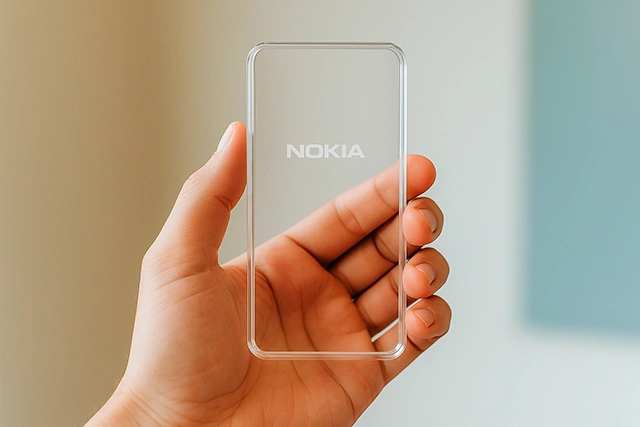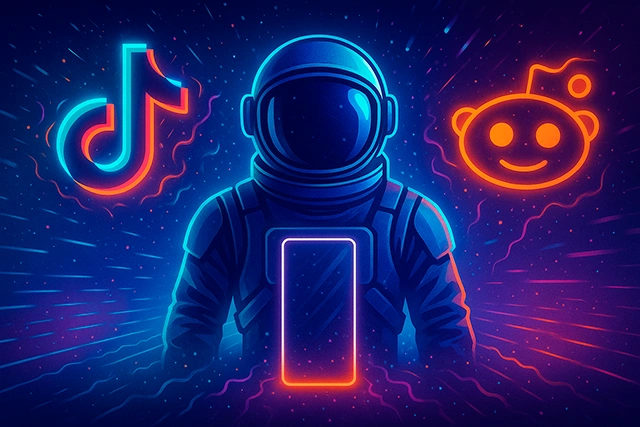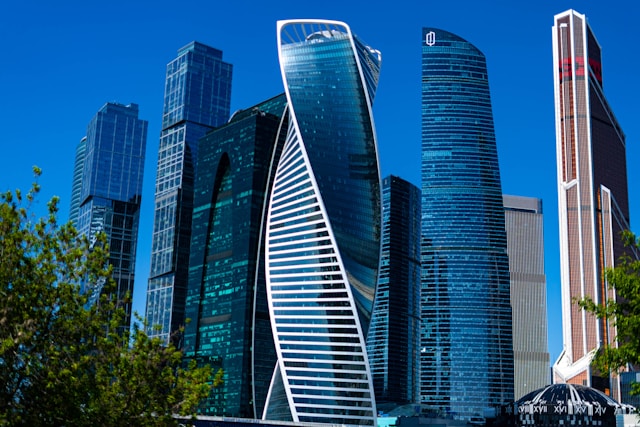Nokia Clear Phone: The Viral Transparent Device That Challenges Smartphone Addiction

In a world oversaturated with screen time and endless notifications, the Nokia Clear Phone emerged not as a gadget but as a statement. This transparent, tech-free phone went viral across TikTok and tech forums, drawing millions of views and sparking global curiosity. But what exactly is the Nokia Clear Phone?
Despite the branding and buzz, this isn’t an official Nokia product. It’s a clever, minimalist concept designed to provoke thought about our relationship with smartphones and potentially offer a path toward digital detox.
This article explores the viral origins, the transparent design, and the cultural impact of this so-called “methaphone.” Is it the future of digital minimalism or just an internet hoax taken too far?
Table of Contents
What Is the Nokia Clear Phone?
The Nokia Clear Phone isn’t your average smartphone. Despite its name and familiar shape, this viral device offers no touchscreen, no apps, and no connectivity. What captivated millions online wasn’t advanced technology, but the complete absence of it. Presented as a clear, minimalist object that resembles a smartphone, the Clear Phone is better understood as a form of digital protest or what some now call a “methaphone.”
Let’s break down where it came from, what it’s made of, and why it’s being seen as a bold symbol of digital detox.
Origins of the Viral Trend on TikTok
The Clear Phone rose to fame after a TikTok user posted a video of a sleek, see-through phone-like object with a Nokia logo. The short clip quickly gained tens of millions of views, with viewers mesmerized by the futuristic look of the device. Many believed it was a new Nokia prototype, possibly a transparent OLED phone.
The illusion was so convincing that even tech-savvy audiences began dissecting the clip, trying to uncover if it was a real leak or a visual effect. It wasn’t long before headlines and Reddit threads picked up the story.
Is It a Real Nokia Product or a Concept?
Despite the branding and the buzz, the Clear Phone is not manufactured or endorsed by Nokia. The product is simply a solid, transparent acrylic block with no circuits, screen, or battery inside. It is shaped like a smartphone and carries the Nokia name purely for effect.
Tech sites later confirmed that the device was not functional in any way and was instead part of a creative experiment or prank intended to highlight our addiction to smart devices.
Understanding the “Methaphone” Idea
The term “methaphone” combines “metaphor” and “phone,” pointing to its purpose as a symbol, not a gadget. Its creator reportedly wanted to explore what happens when you replace a phone with something that looks and feels the same, minus the digital distractions.
By mimicking the physical habit of holding a phone, the methaphone invites users to reflect on their behavior and break the compulsive loop without feeling completely empty-handed. It is not just a joke or a hoax, but a minimalist tool for mindfulness in a hyperconnected world.

A Closer Look at the Transparent Minimalist Design
One of the biggest reasons the Nokia Clear Phone went viral is its striking visual appearance. At first glance, it looks like a futuristic device straight out of a sci-fi movie clean lines, sharp edges, and a fully transparent body that reflects light like glass. This aesthetic alone made millions of people stop scrolling and wonder: is this the phone of the future?
But the real genius lies in what’s missing. By removing all traditional tech components, the Clear Phone becomes an object of pure form a statement on minimalism, distraction, and our relationship with screens.
Materials Used and Visual Appeal
The Clear Phone is made from solid transparent acrylic, cut and polished to resemble a modern smartphone. There are no buttons, no ports, no logos aside from the iconic Nokia branding. From a distance, it could easily pass as a next-gen concept device.
Its clean, invisible design evokes a sense of purity. There’s nothing to distract the eye no text, no apps, no pixels. It’s just a smooth, crystal-like rectangle that feels strangely futuristic, despite being completely analog.
The Sci-Fi Aesthetic and User Fascination
The viral response can largely be attributed to the sci-fi feel of the phone. Users compared it to props from movies like Blade Runner 2049, Black Mirror, or Ghost in the Shell. It taps into our collective imagination of what technology might look like in 10 or 20 years something sleek, silent, and nearly invisible.
Even though the device is non-functional, its form alone captured attention in a way most real smartphones don’t. It represents a fantasy the idea that tech can be elegant, minimal, and unintrusive.
Symbolism of a Clear, Featureless Phone
More than just a design gimmick, the transparency of the Clear Phone serves a deeper purpose. It symbolizes clarity, honesty, and the stripping away of noise. With no screen or software, it becomes a metaphor for mental space a physical reminder to pause and be present.
By holding a phone that does nothing, users are invited to break from digital chaos. It’s not about being productive or efficient it’s about creating distance from the constant flood of alerts, messages, and dopamine-driven interactions.
The design, in this sense, is more than aesthetic. It’s philosophical.

The Purpose Behind It: Digital Detox and Mindfulness
Beyond its transparent design and viral fame, the Nokia Clear Phone stands out for a much deeper reason: its commitment to doing nothing on purpose. In an age where phones are engineered to capture attention and trigger constant engagement, the Clear Phone takes the exact opposite approach offering users a tool to break free from digital overload.
It’s not just a novelty item or a design stunt. It’s a radical proposal for digital detox, encouraging users to rethink their habits and reclaim their focus.
Removing All Distractions: No Apps, No Wi-Fi, No Notifications
The Clear Phone contains no screen, battery, processor, or connectivity and that’s entirely the point. With no way to check social media, receive notifications, or scroll endlessly, the device forces users to disconnect.
Unlike typical “dumb phones” that still offer basic calling or texting features, the Clear Phone offers nothing. This complete absence of function is what makes it so powerful as a symbol of detox. There’s no temptation, no decision fatigue, and no screen to mindlessly check.
A Physical Replacement for Your Smartphone Habit
One of the key ideas behind the methaphone concept is muscle memory. Most people reach for their phones dozens or even hundreds of times a day, often without thinking. The Clear Phone mimics the size and feel of a smartphone, giving users something to hold or carry without triggering compulsive usage.
This approach allows people to slowly detach from their real phones while still satisfying the physical urge to check or touch a device. In this way, the Clear Phone acts as a bridge toward healthier tech habits.
Can an “Empty” Device Help with Phone Addiction?
Surprisingly, the answer may be yes. Psychologists and digital wellness experts often emphasize the importance of behavioral triggers in tech addiction. By replacing your smartphone with a non-functional object, you reduce the chances of falling into habitual scrolling loops.
Some users have reported using the Clear Phone as a kind of pocket placebo carrying it during breaks, meals, or commutes to stay present without feeling anxious about being disconnected. While it doesn’t solve phone addiction on its own, it offers a creative, tangible step toward mindful tech use.

Public Reaction and Social Media Hype
The Nokia Clear Phone quickly became one of the most talked-about tech topics on social media not because of what it could do, but because of what it couldn’t. From TikTok to Reddit, the internet exploded with curiosity, confusion, and creativity as users around the world tried to make sense of the clear, non-functional device.
What started as a viral video turned into a full-blown conversation about modern phone usage, attention spans, and how much control technology has over our daily lives.
Viral Success on TikTok and Reddit
The original TikTok video that featured the Clear Phone sparked over 20 million views within days. Many viewers were convinced they were seeing a real prototype, possibly from Nokia or another major brand. Others speculated it was a leaked concept for a transparent OLED phone or even an AR-based device.
Reddit threads quickly followed, with users dissecting the video frame by frame, looking for clues about the device’s origin. Was it real? Was it CGI? Why was the Nokia logo on it?
As more videos surfaced, the story evolved from speculation to realization this wasn’t a product. It was a concept, and its simplicity was what made it so captivating.
Confusion and Curiosity Among Tech Users
Tech enthusiasts, influencers, and designers began debating the implications of the Clear Phone. Some praised its minimalist brilliance and saw it as a wake-up call. Others dismissed it as a gimmick or prank, questioning whether it had any practical use at all.
But the buzz didn’t stop. In fact, several creators and entrepreneurs even began selling similar clear acrylic “phones” online, promoting them as digital detox tools or novelty conversation pieces.
The device became a mirror reflecting back people’s tech anxieties and their longing for simplicity in an increasingly noisy digital world.
How the Internet Responded to the “Hoax”
Once confirmed as a non-functional concept, the Clear Phone’s status shifted from possible tech leak to intentional social experiment. And surprisingly, the response remained mostly positive.
Rather than being disappointed, many people embraced the message behind the methaphone. They appreciated its boldness, its honesty, and its symbolic power in an era dominated by notifications, apps, and algorithmic distractions.
In a strange twist, the lack of functionality became the feature making the Clear Phone a standout example of how design, storytelling, and cultural timing can spark global conversation.
Comparing Nokia Clear Phone to Other Minimalist Devices
While the Nokia Clear Phone stands out for its extreme approach offering no tech at all it’s not alone in the growing movement toward distraction-free devices. In recent years, several brands have introduced minimalist phones aimed at users who want to disconnect from the noise of modern smartphones.
From stripped-down feature phones to sleek, purpose-built devices for digital detox, the trend shows that simplicity is more than just a design choice it’s a lifestyle decision.
Light Phone and Punkt MP02
Among the most well-known minimalist phones is the Light Phone, which has been praised for its intentional design. It allows only basic functions like calls, texts, alarm, and a few utility tools and crucially, no social media, email, or browser.
The Light Phone II offers an e-ink display and long battery life, marketing itself as “a phone that respects you.” It’s popular among creatives, digital minimalists, and people seeking better work-life balance.
Another popular choice is the Punkt MP02, a Swiss-designed phone focused on simplicity and security. It features physical buttons, a monochrome screen, and limited connectivity. Unlike the Clear Phone, it’s fully functional, but intentionally low-tech.
HMD Global’s Feature Phones
Interestingly, Nokia or rather its brand licensee HMD Global has leaned into the minimalist trend as well. Their re-released classics like the Nokia 2660 Flip and 2024 edition of the Nokia 3210 are marketed as distraction-free alternatives for people tired of smartphones.
These devices support calling and texting, but exclude app stores and notifications. They’ve become increasingly popular with Gen Z users seeking a break from social media or those wanting a “weekend phone” to escape digital burnout.
The Boring Phone and Transparent Concepts
In collaboration with Bodega, HMD also introduced the Boring Phone, a limited-edition clear flip phone sold during Paris Fashion Week. While more fashion-forward than functional, the concept echoes the Clear Phone’s minimalist philosophy removing modern smartphone features to highlight presence over productivity.
What makes the Clear Phone unique, though, is its total absence of technology. Unlike the Light Phone or Punkt, which still serve practical purposes, the methaphone offers no features at all. It’s not a tool it’s a challenge.
For many, that’s the point. It takes the digital detox idea to its extreme, serving not as a replacement device, but as a physical reminder to question our relationship with tech in the first place.
Is There a Market for Tech-Free Phones?
While the idea of a phone that does absolutely nothing may sound absurd to some, the rising popularity of minimalist tech proves there’s growing demand for intentional disconnection. In a world where attention is constantly monetized, many people are starting to push back, seeking tools that help them reclaim control over their time and mental space.
The Nokia Clear Phone, though non-functional, taps into this emerging desire for tech-free zones even if only as a symbolic step.
Target Users: Gen Z, Digital Nomads, Wellness Communities
The largest audiences for digital detox tools come from younger, tech-savvy generations ironically, the same people most attached to their phones. Gen Z in particular has shown increased interest in digital wellness, mindful living, and screen-time limits.
For remote workers and digital nomads, constantly plugged-in lifestyles can lead to burnout and information overload. Devices like the Clear Phone offer a way to draw boundaries without feeling totally disconnected from the tech culture they’ve grown up with.
Wellness communities have also embraced minimalist devices, promoting them as aids for mental clarity, better sleep, and emotional balance. Whether it’s through meditation, journaling, or simply putting the phone away, the message is clear: attention is a resource worth protecting.
The Role of Simplicity in Tech Innovation
Simplicity has always played a role in innovation. From early iPods to modern smartwatches with limited functions, the most effective tech often focuses on doing less, but better.
In that sense, the Clear Phone isn’t anti-technology it’s anti-distraction. It challenges the assumption that every device needs to be “smart” or connected. By removing everything, it creates space to think, breathe, and focus.
This philosophy aligns with broader trends in product design, where intentional minimalism is now a premium feature. From noise-free apps to one-task gadgets, consumers are gravitating toward tools that respect their time.
Would You Use a Phone That Does Nothing?
The question is both rhetorical and reflective. The Clear Phone may not be for everyone, but it forces users to examine their own habits. Do we really need constant updates? Is every notification urgent? What happens when we stop scrolling?
While some may scoff at the idea of carrying a block of acrylic in place of a phone, others find its presence strangely comforting. It offers relief from obligation, reminding us that sometimes, doing nothing is the most revolutionary act.
In a tech-saturated world, silence can be powerful. The Clear Phone just happens to make that silence tangible.
Final Thoughts: A Joke, a Statement, or a New Trend?
The Nokia Clear Phone started as a viral curiosity a clear, buttonless block that looked like something out of a futuristic sci-fi film. But as the dust settled, it became clear that this wasn’t just an internet hoax or a visual gimmick. It was a carefully crafted cultural commentary.
By removing all digital functionality, the Clear Phone doesn’t try to replace your smartphone it challenges it. It asks hard questions about how we live, work, and connect. It invites us to consider whether constant access equals constant value, or if there’s something liberating in intentional absence.
For some, it’s a joke. For others, a piece of performance art. But for many, the Clear Phone represents a new kind of luxury one rooted in mindfulness, simplicity, and control.
As digital detox continues to shift from niche trend to mainstream movement, objects like the Clear Phone may become more than just conversation starters. They may become essential tools for people who want to stay grounded in an increasingly connected world.
Whether you see it as a prank, a protest, or a prototype of future behavior, one thing is clear in 2025, less might finally be more.







